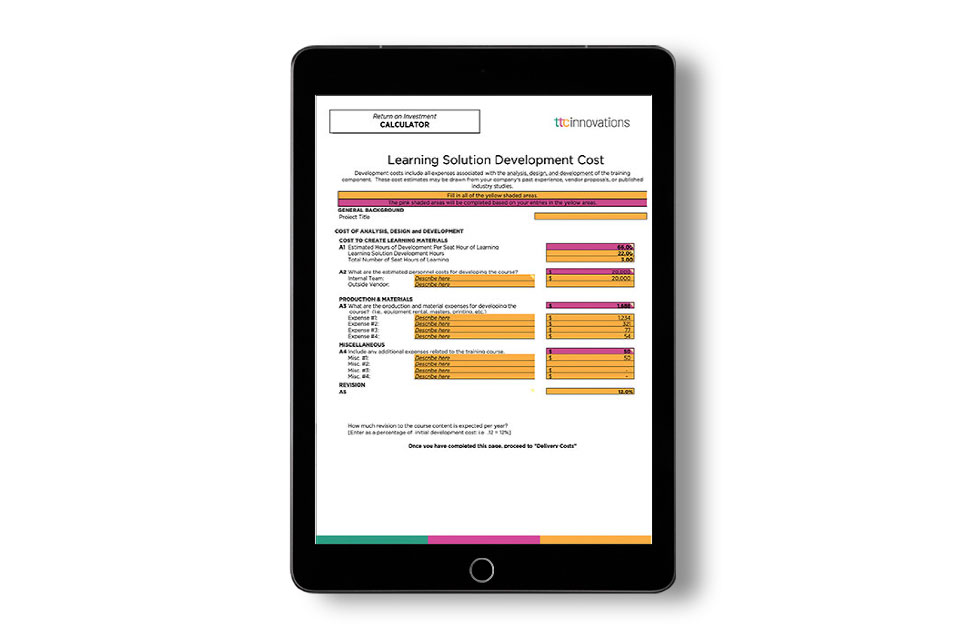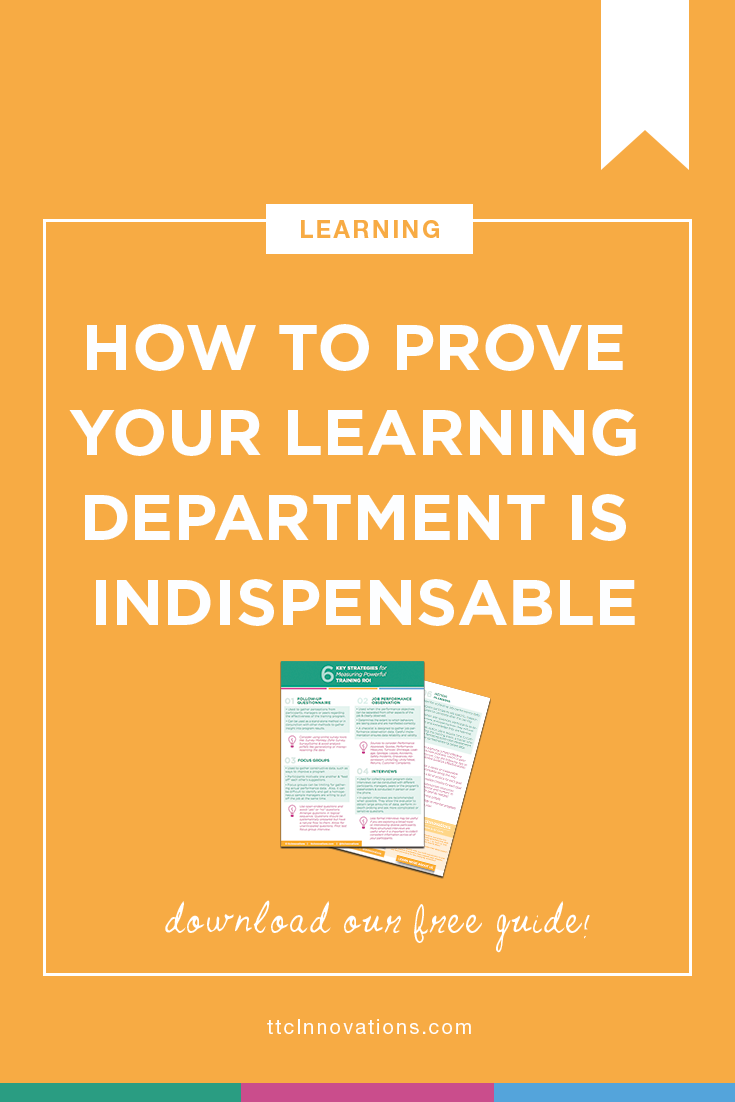Ask a group of ten learning and development team members from different companies what their biggest frustration is and my guess is that most will say — budget cuts! ![]()
Why? Because in most companies, training cost is seen as a liability, not an asset! Although you and I know that employee training is vital to the success of our companies’ growth, most other departments and executives consider it a necessary but unprofitable entity. As such, it’s a place that will likely suffer the financial consequences when times get a little rough.
The good news is that you can absolutely cause a shift in mindset. Don’t believe me? Keep reading! Here’s how to prove your learning department is indispensable (to everyone else)!
Your learning department is vital! Here’s how to prove it to everyone else. Share on X
3 Steps to Prove Your Training Return on Investment (ROI)
Before you state your case to shift everyone else’s mindset, you need to focus on achieving business results! I know, you’re likely thinking, “Thanks, Captain Obvious, but how do I make that happen in the real world?” To prove your training ROI, I recommend you follow these three steps:
- Identify the business goals.
- Find cost-effective solutions.
- Crunch the numbers.
Let’s break these steps down…
Step 1: Identify the Business Goals.
To achieve the desired business results with your training, you first need to identify your company’s big rocks — what business goals are the executives focused on meeting this year? If you’re scratching your head at this, reach out to the executive leadership and ask for clarity. Building a world-class training program teaching employees how to communicate with confidence may be a great idea — maybe you believe your employees will get a lot of benefit out of this program and you plan to use exciting gamification elements that they’ll love. And yet, when you present this program for funding, you get shot down. How is that possible? You’re thinking: But, but, but…it’s a great program — the employees are going to love it!
What happened? You’ve done a great job identifying the key skills needed to build confident communicators. Isn’t that enough?! Well, sadly, no! The big rocks (the business goals) for this year have nothing to do with communication, but rather everything to do with increasing the market share by developing a new line of products. ![]()
Now, before throwing your hands up in defeat, what if you had taken a different approach and considered those big rocks first? Your pitch could’ve looked more like this —
You are going to create a world-class training program to increase employees’ sales by 25% through effective communication techniques.
Now we’re talking! My guess is that your executive team is much more amenable to providing budget approval for THAT initiative. Win-win!
Step 2: Find Cost-Effective Solutions.
The next thing you’ll want to focus on is offering solutions that cost your company less to build and implement than the cost of the problem or gap in the business. Let’s take another look at that world-class training program from Step 1. You’ve completed an initial analysis and estimate that the program you want to create will cost around $250,000 to design, develop, and implement. And, great news — currently, your company has a sales force of 15 people. The average annual sales per person is $350,000. Your training program is designed to increase sales by 25%. This means that each of the 15 sales people will increase their sales by $87,500. This is a total revenue increase of $1,312,500. That’s quite a return on the $250,000 investment, isn’t it?! ![]()
ROI is everything when it comes to proving the value of training programs. In this scenario, the
ROI on this investment is huge — a clear win for everyone. On the other hand, if that same program returns $250,000 or less, the answer is clear that this is not a worthwhile initiative!
Step 3: Crunch Your Numbers.
Next, the proof is in the pudding! ROI on paper has to be backed by real numbers. To do this, you have to plan an effective measurement strategy for your training initiatives.

FREE Download!
Download our FREE “Training ROI Calculator” and calculate your learning and development ROI with ease!
The good news is that if you have already implemented Steps 1 and 2, you’re halfway there! By now, you’ve specified the desired training outcomes (increase sales by 25% through effective communication techniques), and you’ve captured the baseline data (current average sales per employee is $350,000 annually). Now you need to establish your measurement criteria. In this scenario, you will likely want to use a combination of job performance observation, performance monitoring, and possibly action planning. To get a breakdown of these strategies and tips for gathering the best data, download our “6 Key Strategies for Measuring Powerful Training ROI” here! ✅
Consider Outside Variables
Don’t forget that you need to take into consideration any potential variables outside of the training initiative that might impact performance as well. For example, if the company opens a new market in Australia, you can expect that sales totals might well increase exponentially if this new market embraces your products. This sales increase would need to be considered as a new variable when you evaluate outcomes.
Presenting clear and measurable ROI for your learning and development organization with your proposed training initiative enables you to demonstrate the value it will bring to the company. Making that clear connection each time you interact with your company’s decision makers will help you ensure that your learning and development organization doesn’t suffer from budget cuts!









